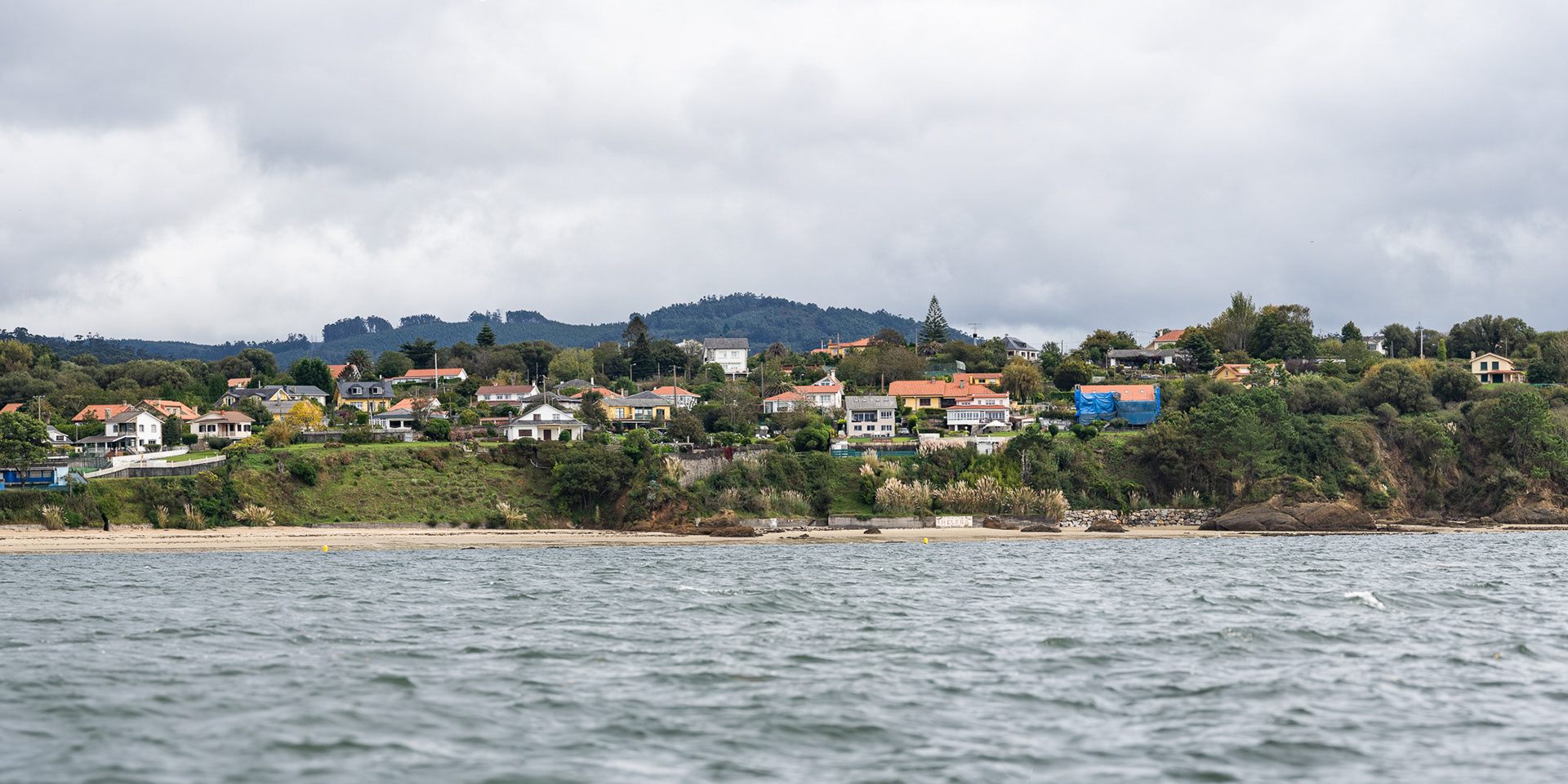We're off! Casting the dock lines after an extensive technical stopover in Lorient, France felt great, as that meant we were finally on our way to the Canary Islands and warmer weather. After the past several passages, this one was straightforward and easy to get back into the routine. Given how volatile the weather in the Bay of Biscay is in the fall, it was imperative to push every chance we had, by keeping good trim in the sails as well as optimizing the headsails for the wind conditions. We carry four, for everything from beating upwind to sailing straight downwind. Our two large headsails, the code zero and code five, are our workhorses for moderate wind conditions at medium angles. Constantly switching between the two as the wind shifts more forward or more back is work, but that was what was needed to cover the most distance.
I was on watch on day two, and just when I though things were going well, I noticed the code five clew drooping in view of the window from what appeared to be a collapsed sail. This was quite odd, as we were sailing in over 18 knots of wind and typically even as little as six is enough to keep the sail full. I quickly popped out to look at what could be the cause, only to find the tack of the sail completely detached and furiously shaking ten feet above my head. The cause? A soft shackle installed by a rigger in Lorient had chafed completely though, releasing the tack and furler from the bowsprit. After some quick action, the code five was stuffed in the sail locker and within two hours we improvised a fix and continued on our way.
Despite all efforts, the weather forecast simply was not in our favor. After three days of sailing, we had made the big jump across the bay, but the remnants of an Atlantic hurricane was headed straight for Portugal, and with that the call was made to stop and wait for the storm to pass. The future of the rest of our passage is still unclear.
The leftover of an Atlantic hurricane hitting the coast, prompting our stopover in Spain instead of continuing on.
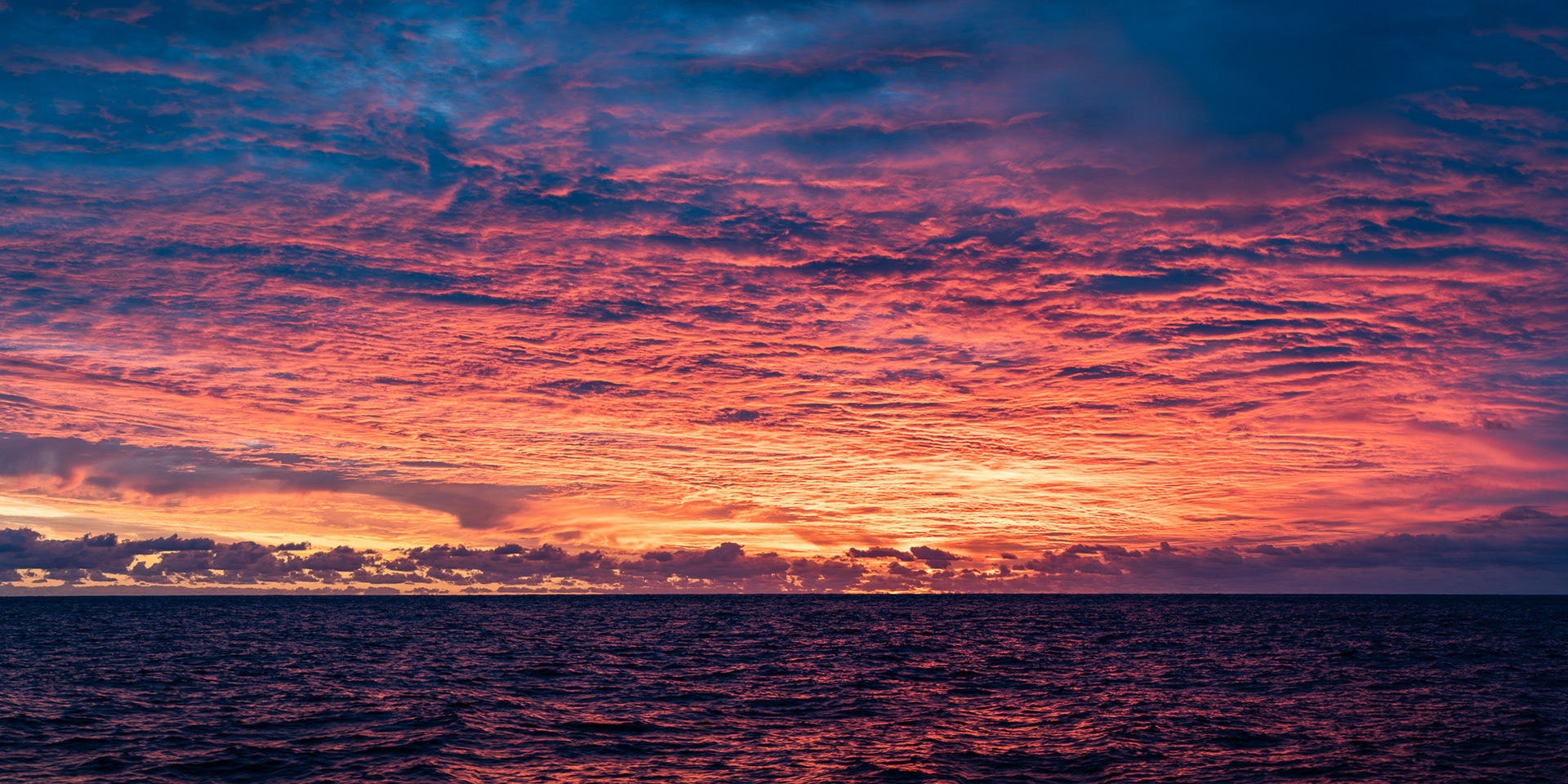
One of the perks of early morning watches - getting the sunrise
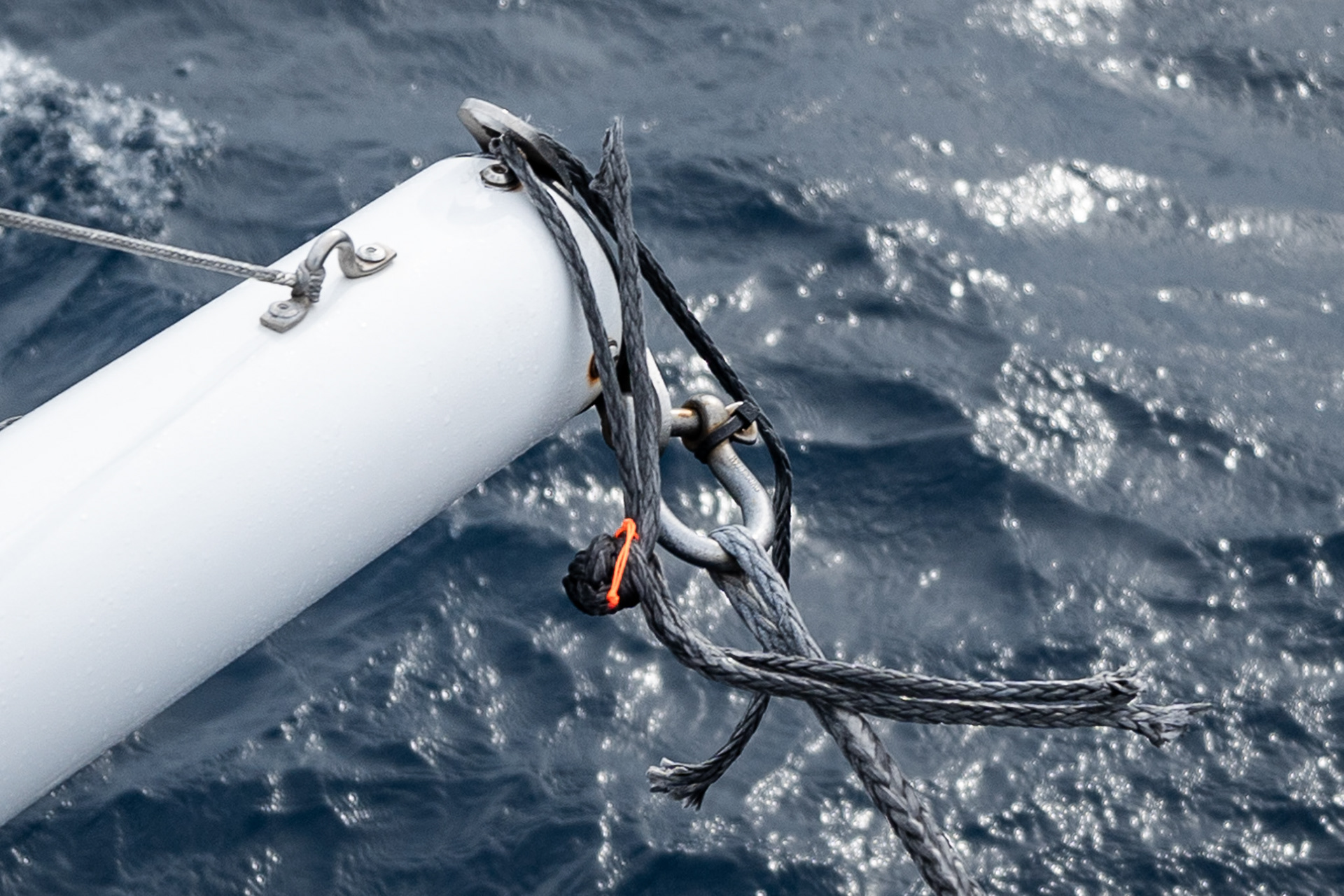
An unsuccessful repair on our bowsprit - this dyneema soft shackle lasted barely five hours before chafing through
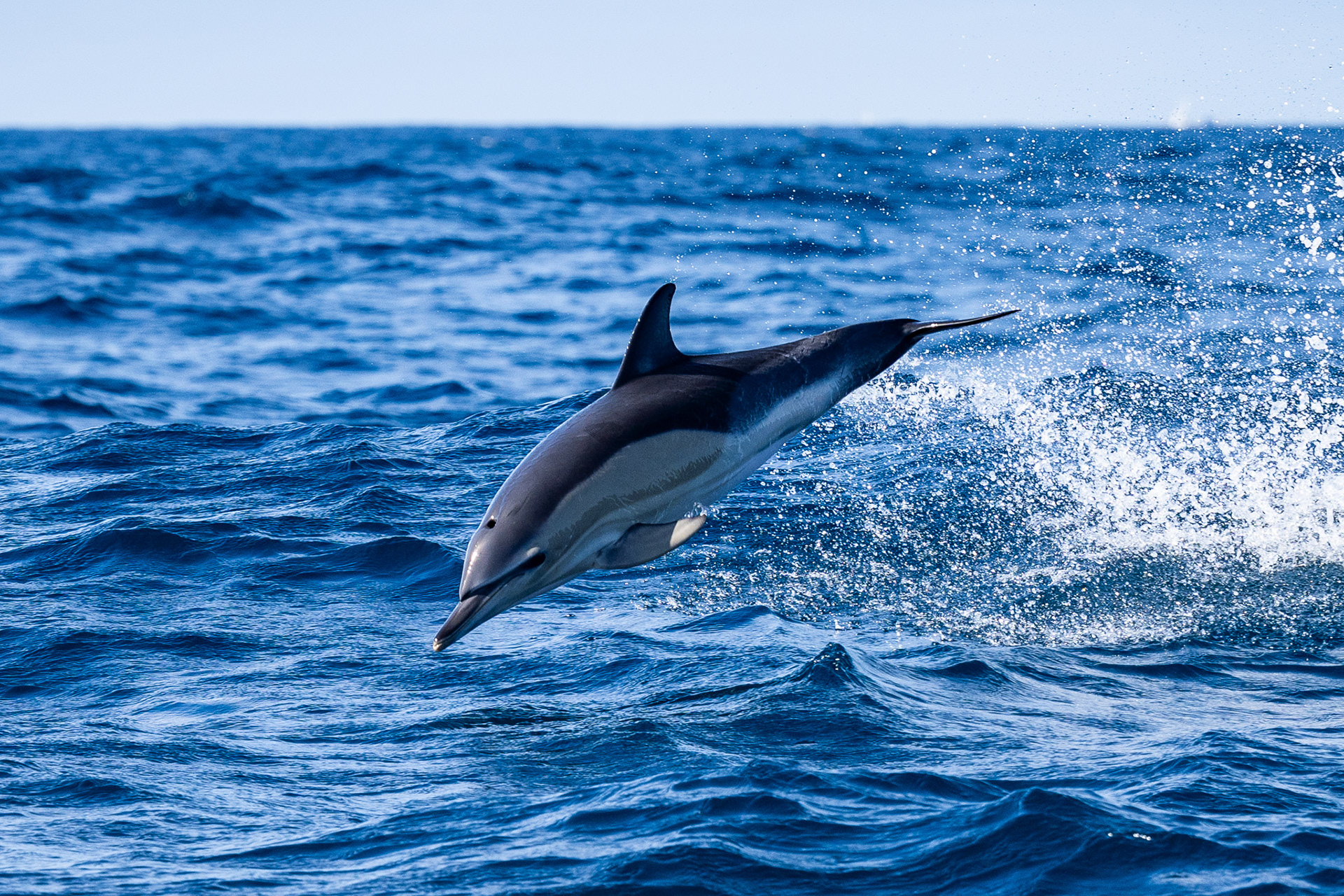
Dolphins! One of a pair of bottlenose dolphins chasing us down, evidently excited by their giant leaps out of the water
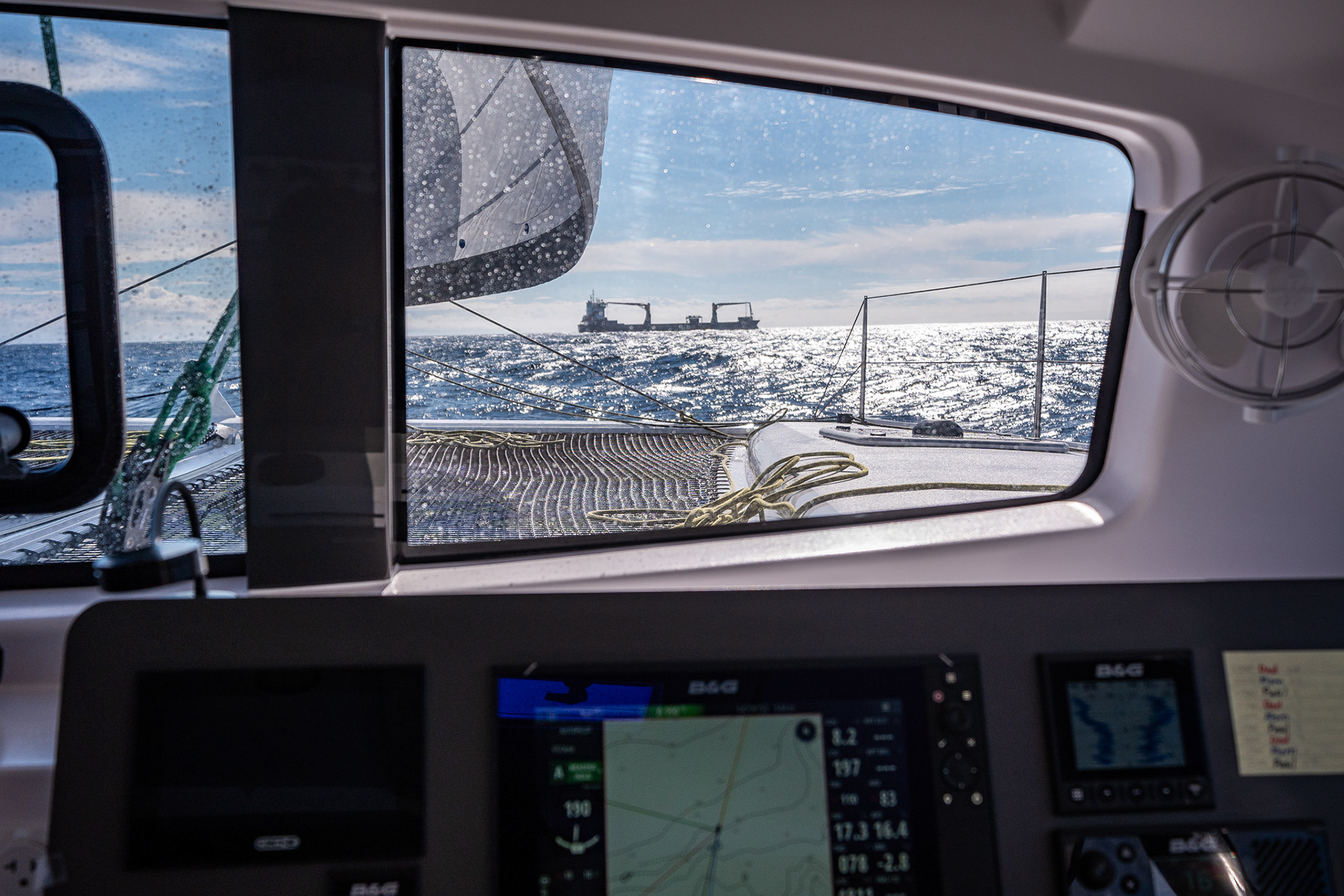
Watching for ship traffic while on watch - this 100+ meter ship passes from just a half mile away

The hilly northwest coast of Spain
